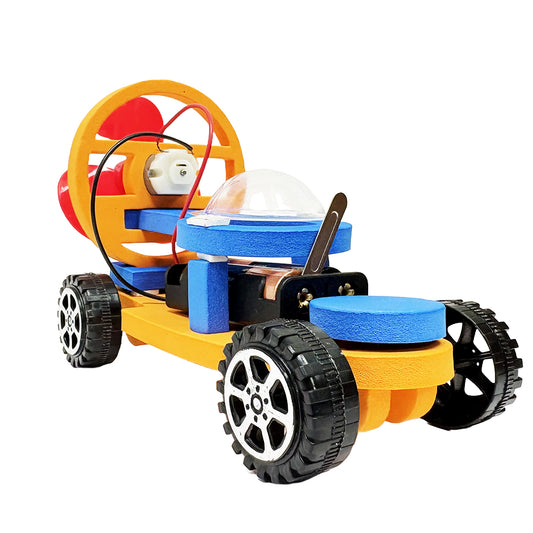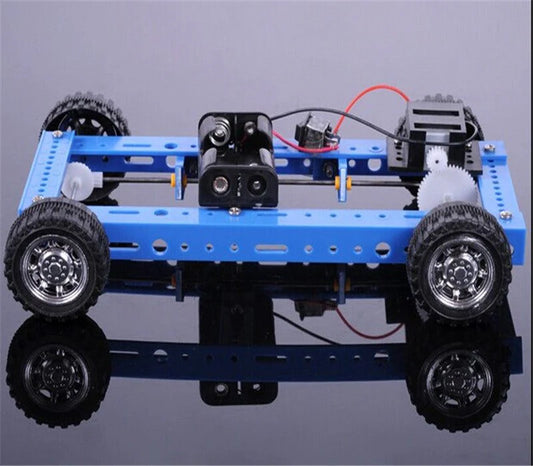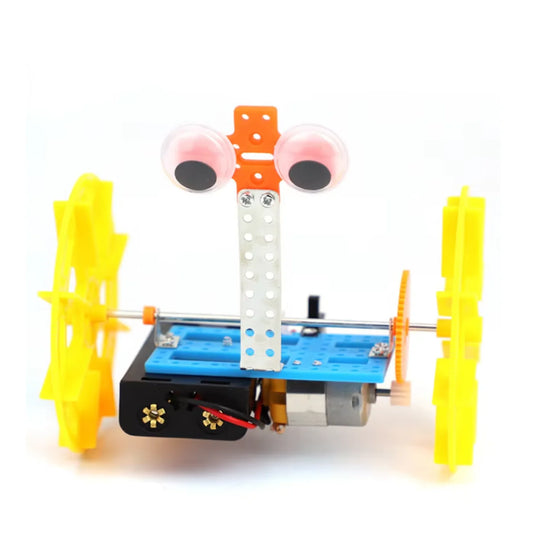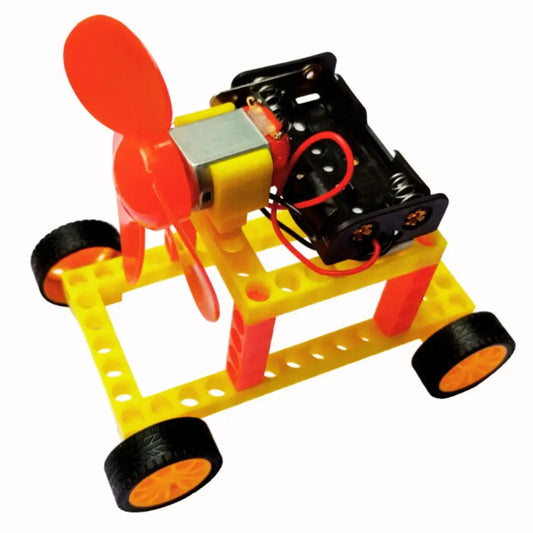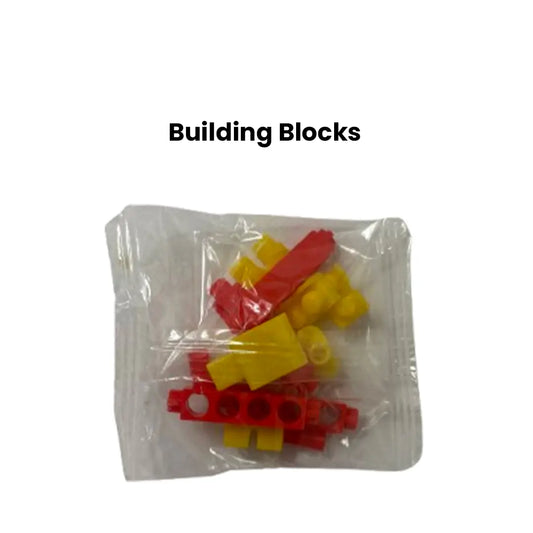
Best Arduino Uno projects for Beginners & Beyond
IEM RoboticsTable of Content
- Who can perform the arduino uno projects?
- Some starter projects using arduino uno
- Different arduino uno projects with code
- Some projects using arduino uno for students
- Tips for Successful Projects as you make arduino uno projects
- Conclusion
The arduino uno projects are the solution to anyone looking to enjoy small and quick projects, and learn a little while they make them. It is the go-to device for anyone exploring hands-on projects and building interactive electronic projects.
In simple terms, you can program the Arduino Uno, a small, easy-to-use computer board, to control electronic devices. Moreover, you can make projects covering various applications, such as automating your home, creating innovative gardening systems, building robots, designing IoT devices, and even making wearable technology.
The Arduino Uno is the most popular among the Arduino board family. You can easily learn about the Arduino Uno and program it to suit your needs. Moreover, it requires little to no prior experience.
Dive into this blog further to discover the multiple projects and experiments you can perform with this single tool as the backbone!
Who can perform the arduino uno projects?
Before we understand what arduino uno based projects consist of, let's first understand the device itself. The Arduino Uno is an open-source microcontroller board that helps create interactive projects, thus providing innovative solutions through automation. It is based on the processor ATmega328p.
●Arduino Uno projects are open to anyone interested. This is regardless of their background or technical expertise.
●Whether you're a student, a professional, or a hobbyist, Arduino is an accessible platform for learning and creating.
●No prior experience is required, and arduino uno projects for beginners are also available.
Here's a more detailed insight -
●Beginner-friendly: Arduino Uno is designed to be easy to use, even for those with no coding experience. The programming language is simple and intuitive, and numerous tutorials and resources are available to guide you.
●Diverse applications: Arduino can be used for various projects, from simple LED blinking to complex robotics and home automation.
●Open-source and free: Arduino hardware and software are open-source and free to use and modify, making them excellent platforms for learning and experimentation.
Some starter projects using arduino uno
These include a few of the easiest arduino uno projects for beginners one can perform with the multi-purpose microcontroller -
1.Arduino-Based Gaming Glove
●This Arduino-based gaming glove works like a mouse and keyboard in the air and allows you to control a graphic user interface (GUI).
●Moreover, this amazing glove, powered by Arduino, helps you enhance your gaming experience.
●You can control virtual games and explore immersive VR worlds using easy hand movements.
2.Automated Washroom Light Using IR Sensors
●This project is based on Arduino Uno and IR sensors. It is used to automatically switch on and off a washroom light that works on AC mains.
●Thus, the light bulb (or tube light) will automatically turn on whenever a person enters the washroom.
●When the person leaves the bathroom, the light will turn off.
3.Alarm Clock Radio Using Arduino
●You can make your Noise Detector System with an automatic recording feature using Arduino Uno.
●This helps to tackle noise pollution in offices, libraries, and classrooms.
●Moreover, this device alerts you to loud noises, records them, and can be a game-changer for productivity.
4.Fancy Lights Controller
●The fancy lights controller described here is built around the Arduino (an open-source single-board microcontroller) platform that can be purchased in pre-assembled hardware form.
●Additionally, the circuit is a portable four-channel, multi-mode digital light controller, realized using very few external components.
●Four LEDs are made to glow in different sequences and patterns, controlled from the Arduino board.
5.Fingerprint Sensor Lock
●This simple fingerprint door unlock project using Arduino can benefit door security, attendance systems, and much more.
●The whole system works under a simple algorithm called the matching algorithm.
●Moreover, this is used to compare previously stored templates of fingerprints against users’ fingerprints for authentication purposes.
Different arduino uno projects with code
Arduino Uno projects involve creating electronic circuits and programs to control various components. These projects often include coding in the Arduino Software IDE, which allows you to write and upload the code to the Arduino board.
Hence, coding is an essential aspect of the arduino uno projects.
Here are some popular Arduino Uno project ideas that involve coding:
●Blinking LED: This is a classic project for learning basic Arduino programming. By writing simple code, you can control an LED to blink on and off.
●LED with Switch: You can use a push-button switch to turn an LED on or off. Thus, demonstrating input and output control.
●Simple Sound Control System: This project helps to detect and respond to sounds using a microphone and Arduino.
●Automatic Street Light Controller: This allows you to control an LED based on ambient light using a light sensor.
●Safety Alarm: You can build a simple alarm system using an alarm sensor and buzzer.
●Arduino Stopwatch: Users can even create a basic stopwatch using Arduino's timer functions.
●Traffic Light Controller: This is an advanced project. You can simulate a traffic light using LEDs and switches.
●Servomotor Control: This project teaches you how to use a servomotor to create a moving arm or other mechanism.
●Bright Night Lamp: Additionally, you can create a bright night lamp that adjusts brightness or turns off based on a sensor.
Some projects using arduino uno for students
Students can make great use of these projects.
For students who want to learn new techniques of using STEM to the best potential, here are some projects they can make -
1.Automated Plant Watering System
●This project is a simple and exciting plant-watering system you can build in just a few hours.
●An automated plant watering system using Arduino monitors soil moisture and automatically waters plants when needed.
●This is achieved by using a soil moisture sensor to detect moisture levels, an Arduino microcontroller to process the sensor data and activate a water pump, and a relay module to switch the water pump on and off.
●With the efficient use of a moisture sensor and downloadable component layouts and source code, this could be perfect for potted plants on your terrace, balcony, or front lawn.
●It works everywhere with excellent efficiency!
2.Smart GPS Tracker Using Arduino
●Besides this, the device can also be used to track your vehicle location and other objects.
●A Smart GPS Tracker using Arduino involves using an Arduino microcontroller, a GPS module, and optionally a GSM module to track a device's location.
●Moreover, the Arduino reads GPS data, which it can transmit (latitude and longitude) via SMS or other methods with a GSM module.
Tips for Successful Projects as you make arduino uno projects
●To ensure the success of your Arduino projects, start with a clear goal and break down complex tasks into smaller, manageable steps.
●Moreover, utilize readily available resources like tutorials and online forums for guidance.
●Then, thoroughly test and debug your code, and consider adding visual feedback like LEDs to monitor its behavior.
●Furthermore, you must remember that Arduino is a platform for experimentation, so don't be afraid to try different approaches and learn from your mistakes.
Here's a more detailed breakdown of tips for successful Arduino projects:
1. Define Your Project's Goals:
●Start with a clear objective: A well-defined goal will guide your design and coding efforts.
●Break down complex tasks: If your project involves multiple functionalities, divide it into smaller, independent modules.
2. Learn and Utilize Resources:
●Explore tutorials and online communities: The Arduino community is rich in knowledge, with numerous tutorials, forums, and projects available.
●Refer to Arduino Docs and example codes: The official documentation provides comprehensive information on boards, sensors, and libraries.
3. Design and Prototype:
●Plan your wiring: Sketch your circuit before connecting components to the Arduino.
●Use a breadboard for initial prototyping. This allows you to easily test and adjust your circuit without soldering.
●Test and verify each component: Also, ensure each sensor, motor, or LED works correctly before integrating them into your final project.
4. Code and Debug:
●Write clear and concise code: Use comments to explain your logic and make it easier to understand.
●Start with simple examples: To understand the basics, begin by replicating the "Blink" LED tutorial.
●Thoroughly test and debug: Additionally, check for errors, unexpected behavior, and optimize your code.
Conclusion
The arduino uno projects open a world of possibilities for anyone eager to learn about the world of innovation. These projects offer a hands-on, practical learning experience, promoting STEM education and fostering innovation.
Additionally, the projects are helpful because they provide a user-friendly and versatile platform for learning about electronics, programming, and robotics. They are relatively inexpensive, easy to use, and offer a wide range of applications, making them an excellent tool for beginners and experienced makers.
Hence, it is often the go-to board for experimenting with electronic projects, learning programming, and building interactive objects or environments. Now, purchase your Arduino Uno microcontroller and make the best projects!

